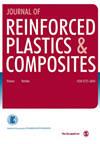Hybrid of micro-aramid and nano-alumina prominently enhanced the wear resistance of polytetrafluoroethylene composites
IF 2.2
3区 材料科学
Q3 MATERIALS SCIENCE, COMPOSITES
引用次数: 0
Abstract
Polymer self-lubricating composites are key in reducing energy consumption from friction, boasting self-lubrication, remarkable wear, and corrosion resistance. This study delves into the unexpected synergy between micro-aramid and nano-Al微芳纶和纳米氧化铝的混合体显著提高了聚四氟乙烯复合材料的耐磨性
聚合物自润滑复合材料具有自润滑、优异的耐磨性和耐腐蚀性,是减少摩擦能耗的关键。本研究深入探讨了微芳纶和纳米 Al2O3 在增强聚四氟乙烯耐磨性方面意想不到的协同作用。结果表明,15 Vol.% 微芳纶和 1 Vol.% 纳米 Al2O3 粒子的最佳混合增强聚四氟乙烯复合材料具有最佳的摩擦学性能,显示出协同的抗摩擦和抗磨损效果,并获得了 8.73 × 10-7 mm3/Nm 的极低磨损率,与单独使用 15 Vol.% 微芳纶和 1 Vol.% 纳米 Al2O3 增强聚四氟乙烯复合材料相比,磨损率分别降低了 53% 和 98.7%。摩擦界面的深入表征和分析证实,聚四氟乙烯在摩擦过程中产生的羧酸基团与双钢表面螯合,微芳纶与双钢产生的强极性相互作用、机械应力和高闪点温度促进了纳米 Al2O3 的摩擦烧结以提高承载能力,这三者共同赋予了三薄膜易剪切和高承载性能的坚固保护性,有效提高了聚四氟乙烯复合材料的摩擦学性能,为研究和设计具有超低磨损和自润滑性能的新型纳米复合材料提供了参考。
本文章由计算机程序翻译,如有差异,请以英文原文为准。
求助全文
约1分钟内获得全文
求助全文
来源期刊

Journal of Reinforced Plastics and Composites
工程技术-材料科学:复合
CiteScore
5.40
自引率
6.50%
发文量
82
审稿时长
1.3 months
期刊介绍:
The Journal of Reinforced Plastics and Composites is a fully peer-reviewed international journal that publishes original research and review articles on a broad range of today''s reinforced plastics and composites including areas in:
Constituent materials: matrix materials, reinforcements and coatings.
Properties and performance: The results of testing, predictive models, and in-service evaluation of a wide range of materials are published, providing the reader with extensive properties data for reference.
Analysis and design: Frequency reports on these subjects inform the reader of analytical techniques, design processes and the many design options available in materials composition.
Processing and fabrication: There is increased interest among materials engineers in cost-effective processing.
Applications: Reports on new materials R&D are often related to the service requirements of specific application areas, such as automotive, marine, construction and aviation.
Reports on special topics are regularly included such as recycling, environmental effects, novel materials, computer-aided design, predictive modelling, and "smart" composite materials.
"The articles in the Journal of Reinforced Plastics and Products are must reading for engineers in industry and for researchers working on leading edge problems" Professor Emeritus Stephen W Tsai National Sun Yat-sen University, Taiwan
This journal is a member of the Committee on Publication Ethics (COPE).
 求助内容:
求助内容: 应助结果提醒方式:
应助结果提醒方式:


